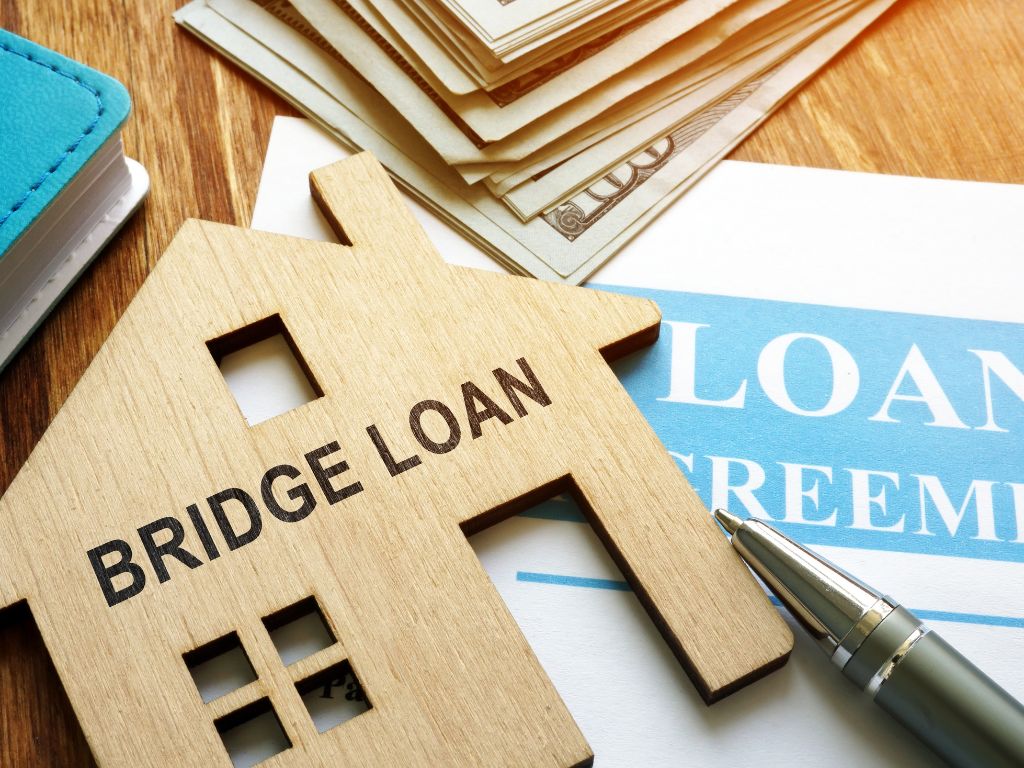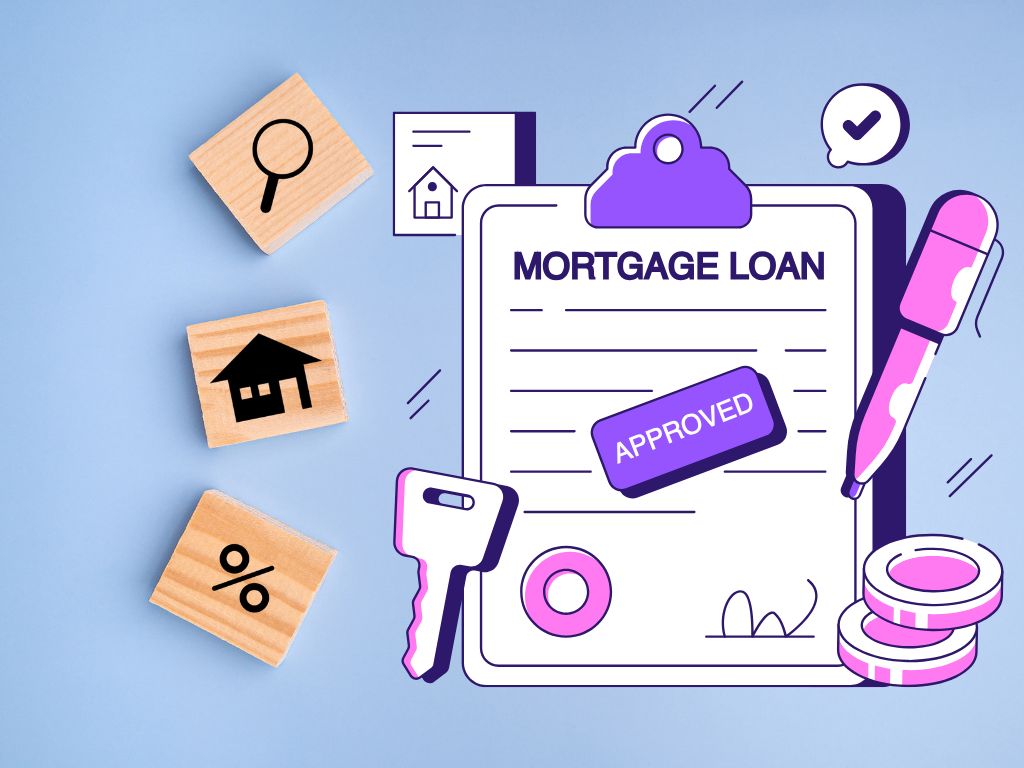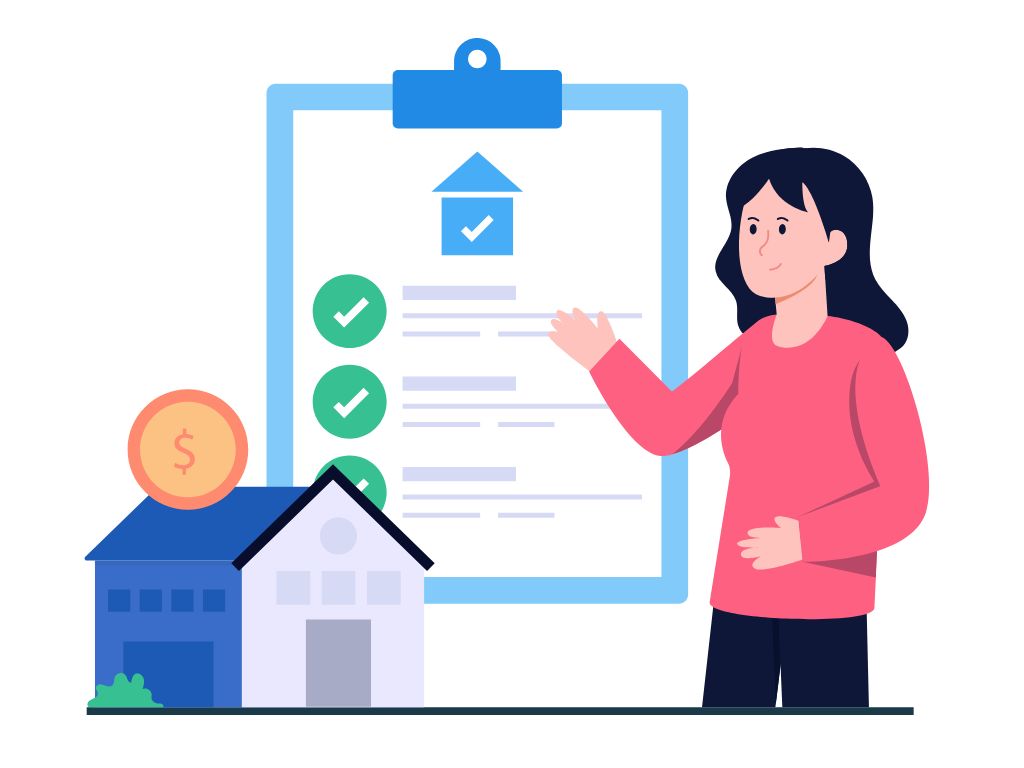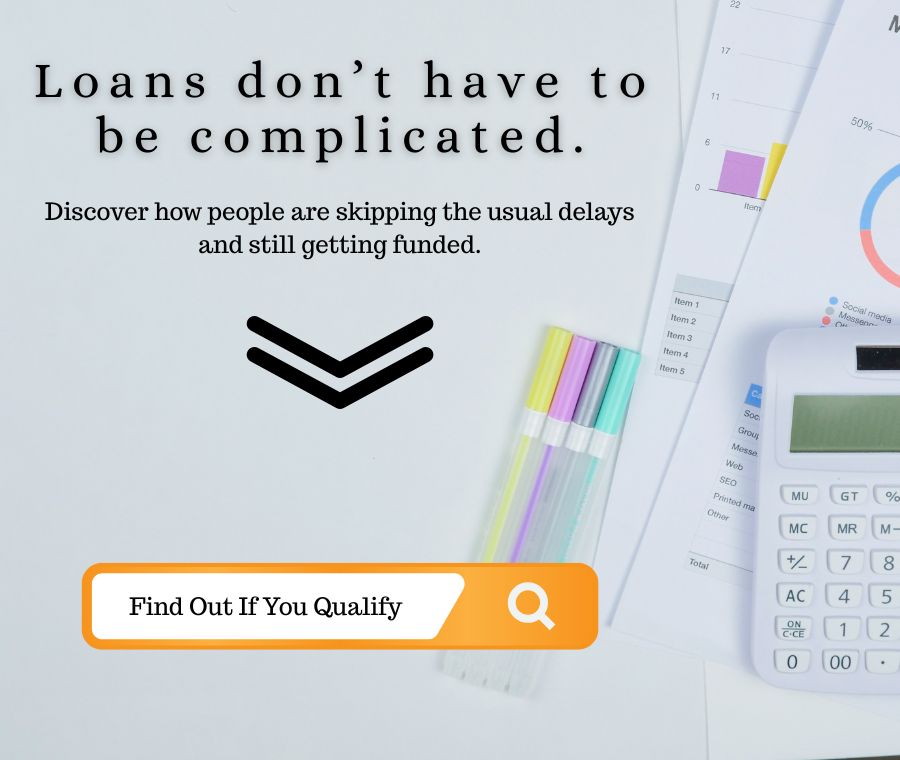Introduction
Timing can make or break financial decisions, especially when large assets are involved. You may find yourself ready to buy a new home before selling your current one, or needing temporary funding while waiting for a longer loan to close. In situations like these, liquidity matters more than long-term terms and that’s where a bridge loan comes in.
A bridge loan is a short-term financing solution designed to fill gaps between transactions or funding stages. It provides access to cash when timing, not credit, is the primary obstacle. These loans are often used in real estate, but they also help businesses or individuals manage transitional periods without disrupting plans.
In this guide, you’ll learn what a bridge loan is, how it works, what it costs, and when it makes sense to use one. By the end, you’ll know whether a bridge loan is a smart temporary tool or an expensive shortcut that could work against you.
Key Takeaways
Bridge Loans: What to Know Before You Borrow
- Bridge loans provide short-term funding to cover financial gaps, often between selling one property and buying another.
- They are secured by existing property or equity and repaid once long-term financing or sale proceeds arrive.
- Loan terms are typically six to twelve months, with higher interest rates and fees than conventional mortgages.
- These loans prioritize timing and liquidity over cost, making them useful but risky if repayment depends on uncertain sales.
- Bridge loans can be valuable tools for confident borrowers who understand their exit plan and cash flow limits.
Disclaimer: This site contains affiliate links. If you make a purchase, we may earn a commission at no extra cost to you.

What Is a Bridge Loan?
A bridge loan is a short-term loan that provides immediate funding until permanent financing or the sale of an existing asset is complete. It “bridges” the gap between two financial events, allowing borrowers to move forward without waiting for existing funds to free up.
Most bridge loans are secured by collateral, such as a home, investment property, or business asset. Because they rely on existing equity, they’re often used by homeowners who want to buy a new property before selling their current one, or by businesses that need quick capital to cover operations while awaiting revenue or long-term loans.
Bridge loans usually last from six months to one year and come with higher interest rates than conventional financing. Repayment often happens in one lump sum once the borrower receives proceeds from a sale or closes on another loan.
These loans serve a practical purpose: they provide liquidity when timing and opportunity matter more than cost.
According to 2025 industry reports from the Mortgage Bankers Association and CFPB data, bridge loan terms typically range between 6 – 12 months with average APRs of 8% – 12%, depending on equity and borrower credit profile.

How Do Bridge Loans Work?
Bridge loans function as temporary financing secured by equity you already own. Lenders evaluate the value of your current property or assets, determine how much equity you can leverage, and provide funds that can be used for a down payment, purchase, or operating capital.
The loan amount typically covers a portion of your available equity, usually up to 80% loan-to-value and is repaid when your property sells or when permanent financing closes. Many bridge loans require only interest payments during the term, with the principal due as a lump sum at the end.
For example, if you’re purchasing a new home before your existing one sells, a bridge loan can supply the down payment for the new property. Once your old home sells, you use the sale proceeds to pay off the bridge loan entirely. This keeps transactions moving without forcing a rushed sale or missed opportunity.
Because they’re short-term and higher-risk for lenders, bridge loans come with higher interest rates and fees than standard loans. They’re best used when you have a clear exit strategy and expect reliable inflows within months, not years.
Based on 2025 lender disclosures and Freddie Mac data, most bridge loans are interest-only for six to twelve months with loan-to-value ratios between 70% and 80%, depending on borrower equity and credit standing.

What Are the Advantages of a Bridge Loan?
The main appeal of a bridge loan is speed. When opportunities move faster than traditional financing, bridge loans give borrowers the liquidity to act immediately. Whether buying a new property, covering temporary expenses, or waiting for long-term funding, they provide short-term access to cash without disrupting larger financial plans.
Because bridge loans are asset-backed, they allow borrowers to tap into existing equity instead of taking on unsecured debt. This can make them easier to qualify for than personal loans or unsecured business financing, especially if your income or credit profile is temporarily in flux.
In competitive housing markets, a bridge loan can help buyers secure a new home before their old one sells, eliminating the need for contingent offers. Businesses can also use them to bridge seasonal gaps or fund operations while awaiting contracts or payments.
Finally, bridge loans offer flexibility. Many lenders allow interest-only payments during the loan term, reducing short-term strain on cash flow until your sale or refinancing closes.
In short: bridge loans are valuable for borrowers with strong equity positions and predictable timelines who need fast access to capital without waiting for longer lending processes.

What Are the Drawbacks and Risks?
Bridge loans solve short-term liquidity problems, but they come with trade-offs that can make them expensive or risky if not managed carefully.
The first drawback is cost. Because these loans are short-term and carry more risk for lenders, interest rates and fees are significantly higher than those of traditional mortgages or long-term financing. Borrowers may also face additional charges such as appraisal fees, origination fees, or closing costs that reduce the value of quick funding.
Another drawback is the repayment structure. Many bridge loans require repayment in full once your property sells or refinancing closes. If your asset takes longer to sell, or if your next financing deal falls through, you could be left with overlapping loan payments or the need for emergency refinancing.
The main risk is collateral exposure. Bridge loans are secured by your existing property or assets, meaning that missed payments or default could lead to foreclosure or repossession. Borrowers effectively take on double debt for a limited period, which increases financial strain if market conditions change.
Behavioral risks also matter. Overestimating your sale timeline, ignoring potential delays, or using a bridge loan as a substitute for long-term financing can turn a temporary solution into a lasting burden.
According to 2025 CFPB and Federal Housing Finance data, bridge loans typically carry APRs 2 – 4 percentage points higher than conventional mortgages, and average borrower default rates are elevated when property sales exceed 120 days from listing.
Bottom line: bridge loans are effective when you control the timing. They become dangerous when timing controls you.

When Does a Bridge Loan Make Sense?
A bridge loan makes the most sense when timing, not credit, is your biggest obstacle. If you have equity in an existing property and are waiting for a sale or long-term financing to close, a bridge loan can help you keep your plans on schedule without pausing critical transactions.
- For homeowners, it’s often the best option when buying a new house before selling the current one. It eliminates the need for contingent offers, allowing you to act quickly in competitive markets where homes move fast. You can close on the new property, then repay the loan once your old home sells.
- For businesses, bridge loans can provide short-term working capital between project stages or while waiting for investor funding, contract payments, or other inflows. They keep operations steady when timing gaps would otherwise cause disruptions.
However, bridge loans only make sense when repayment is clear and predictable. If your sale timeline is uncertain, your cash flow unstable, or your market softening, the risk of overlapping debt outweighs the benefit of speed.
Bridge loans should never replace long-term financing, they should connect one solid plan to the next.
Based on 2025 market data, bridge loans are most commonly used by borrowers with at least 20 – 30% equity in their current property and verifiable exit strategies such as pending home sales or pre-approved refinance offers.

How to Qualify and Apply for a Bridge Loan
Qualifying for a bridge loan depends primarily on your available equity, credit strength, and repayment plan. Lenders focus less on long-term income projections and more on your current asset value and the credibility of your exit strategy, how you intend to pay off the loan once your property sells or permanent financing closes.
Most lenders require borrowers to have at least 20% equity in the collateral property, a credit score in the mid-600s or higher, and a clear proof of sale or refinancing plan. In business cases, lenders also review balance sheets, cash flow statements, and evidence of pending payments or contracts.
Here’s what the typical bridge loan process looks like:
- Initial evaluation: The lender reviews your assets, credit profile, and exit plan.
- Appraisal and terms: The collateral is appraised, and loan-to-value ratios are calculated (often up to 80%).
- Offer and documentation: The lender provides an offer including term length, interest rate, and repayment conditions.
- Approval and closing: Once terms are accepted, documents are signed, and funds are released often within one to two weeks.
- Repayment: You make interest-only payments until your sale or refinancing event finalizes, then repay the loan in full.
To strengthen approval odds, borrowers should present a detailed timeline of their sale or funding plan and maintain realistic property valuations. Lenders are more likely to approve borrowers who can demonstrate clear timing, solid equity, and financial control.
Industry data from 2025 mortgage and commercial lending reports show that bridge loan approvals are fastest (7 – 14 days) for applicants with verified equity above 25%, strong credit, and pre-documented repayment strategies.
Check out our simple Bridge Loan Calculator Tool Here

Bridge Loan Alternatives to Consider
Bridge loans aren’t the only way to manage short-term funding gaps. Depending on your timeline, risk tolerance, and available equity, several alternatives can achieve similar results at lower cost or complexity.
Home Equity Line of Credit (HELOC)
A HELOC allows homeowners to borrow against their home’s equity as needed, often at lower interest rates than bridge loans. It works best when you have sufficient equity and don’t need to move before selling your current property.
Home Equity Loan
Unlike a HELOC, a home equity loan provides a lump-sum payment with fixed interest and predictable monthly payments. It’s slower to process but cheaper and more stable for borrowers who can wait a few weeks.
Personal Loan
Unsecured personal loans can cover smaller short-term expenses, though approval depends heavily on credit and income. They’re faster and simpler to obtain but come with lower limits and higher rates than equity-backed financing.
401(k) Loan
Borrowing from a 401(k) plan offers quick access to cash without a credit check, but it reduces retirement savings and carries penalties if not repaid on time. It’s only advisable when other financing options aren’t feasible.
Sale-Leaseback or Contingent Offers
Some homeowners negotiate sale-leaseback arrangements, selling their home and renting it temporarily while purchasing another. Others use contingent offers to align sale and purchase timelines without extra loans.
Each alternative trades speed for security. HELOCs and home equity loans cost less but move slower. Personal or 401(k) loans provide flexibility but can strain long-term finances. Bridge loans remain the fastest solution when timing is non-negotiable.
As of 2025, average HELOC rates range from 7% – 10%, while personal loan APRs span 9% – 18%, according to Federal Reserve and consumer lending data. Bridge loans typically sit above both categories due to shorter duration and elevated risk.

Conclusion: Timing, Cost, and Confidence The Real Bridge
A bridge loan isn’t about taking on more debt; it’s about gaining time when timing has real financial value. It fills the gap between plans, allowing transactions to move forward instead of waiting for everything else to align. Used correctly, it connects stability to opportunity but used carelessly, it can do the opposite.
The strength of a bridge loan lies in preparation. When borrowers know exactly how and when they’ll repay, the cost of short-term financing becomes predictable and controlled. When that clarity is missing, the same loan can create stress, double payments, and lost equity.
For homeowners, it’s most effective in fast markets where buying opportunities don’t wait. For businesses, it serves as a pressure valve, keeping operations steady while waiting for revenue or long-term financing to arrive. In both cases, the key is realism: know your exit plan before you enter.
In 2025, bridge loans remain a useful but conditional tool. They reward those who plan carefully and penalize those who assume time will cooperate. With the right strategy, they can turn uncertainty into advantage, a genuine bridge between need and readiness.
Loan rate and term comparisons in this guide reflect 2025 market data from the Mortgage Bankers Association and Federal Reserve consumer lending reports.
Ready to see your own estimates? Use our Bridge Loan Calculator to find out how monthly payments and total interest could compare across different terms.

Frequently Asked Questions (FAQs)
1. What is the typical interest rate on a bridge loan in 2025?
Bridge loan rates in 2025 generally range between 8% and 12%, depending on equity, credit score, and property type. Because the term is short and risk is higher, rates exceed those of traditional mortgages or HELOCs.
2. How long does it take to get a bridge loan approved?
Most lenders can approve a bridge loan within one to two weeks once collateral and documentation are verified. The exact timeline depends on property valuation speed and the borrower’s financial documentation.
3. Can I get a bridge loan with bad credit?
It’s possible, but difficult. Lenders place heavier emphasis on your available equity and repayment plan. Borrowers with lower credit scores may face higher interest rates or stricter terms.
4. What happens if my property doesn’t sell before the bridge loan is due?
If your home or asset doesn’t sell on time, you must still repay the loan or refinance it through another product. Many borrowers extend their bridge loan or shift to long-term financing, but both options add cost and risk.
5. Are bridge loans only for homeowners?
No. While homeowners use them most frequently, businesses and real estate investors also rely on bridge loans to maintain liquidity between projects or funding stages. The principle is the same: short-term access to cash secured by assets.
0 Comments